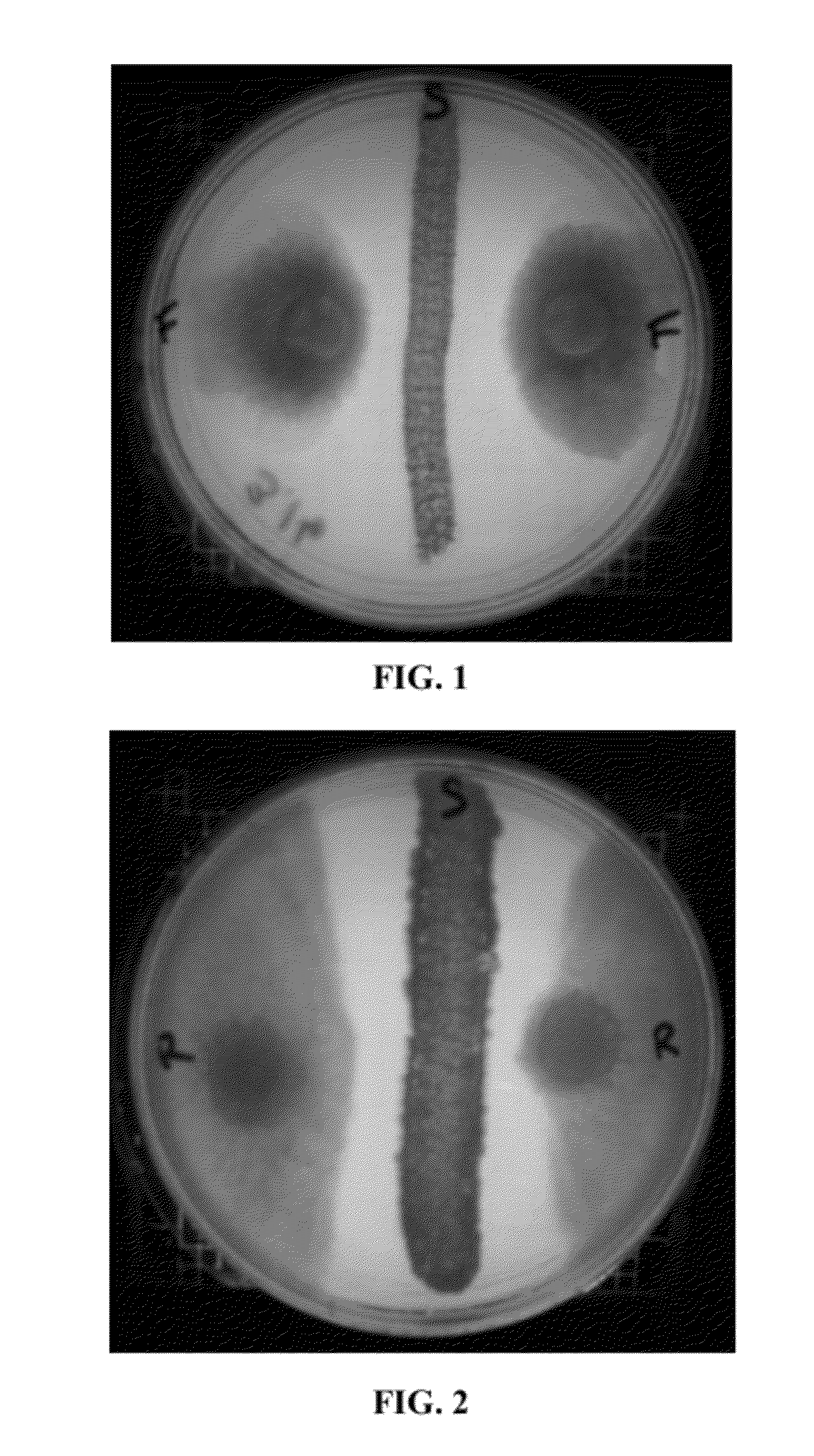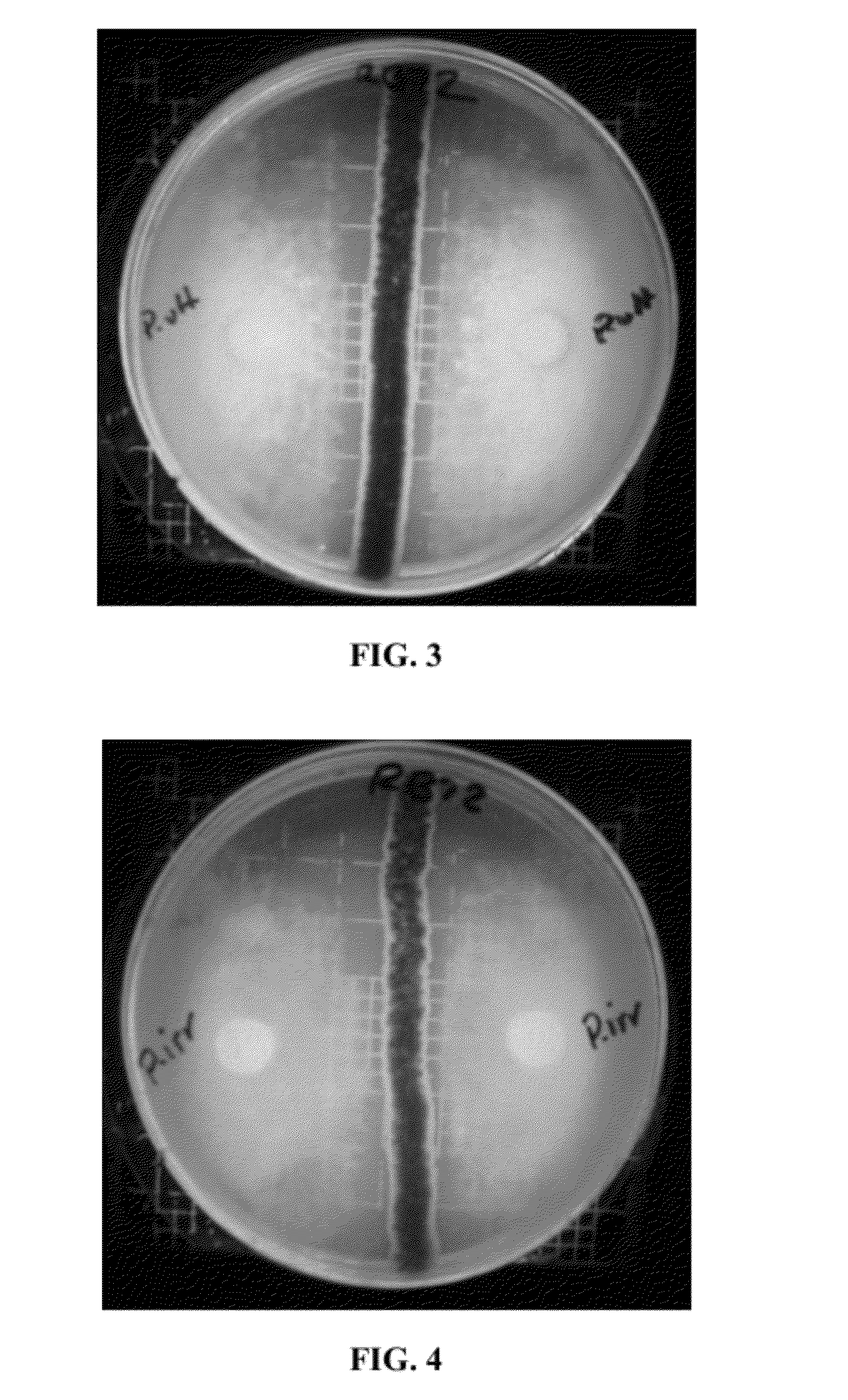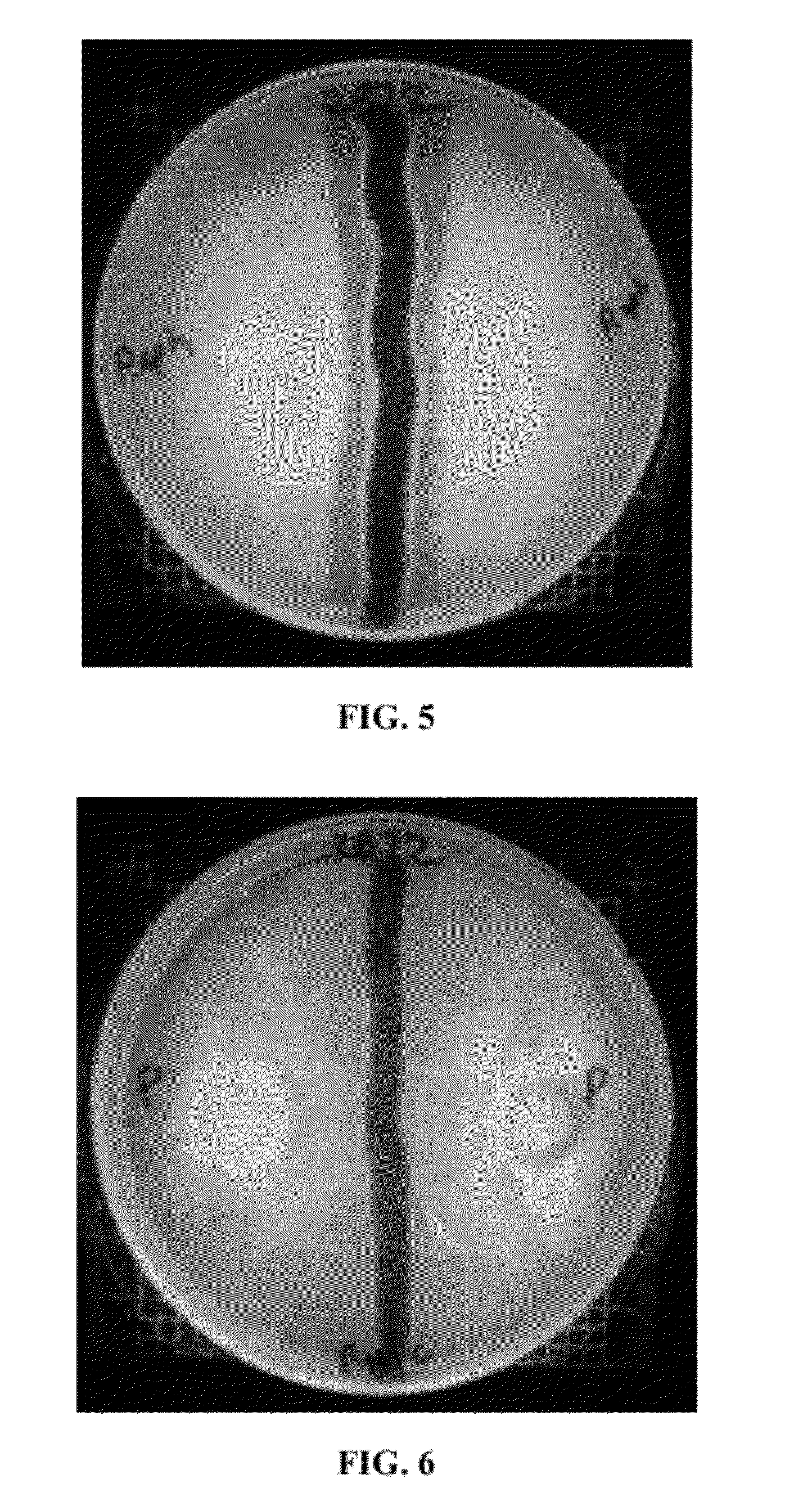Growth enhancement and control of bacterial and fungal plant diseases with streptomyces scopuliridis
a technology of plant diseases and growth enhancement, which is applied in the direction of antibacterial agents, peptide/protein ingredients, drug compositions, etc., can solve the problems of economic losses, the impact of chemical pesticides on the environment and human health, and the constant state of the economy, so as to reduce the use of chemical pesticides, enhance plant growth, and reduce the impact of environmental impa
- Summary
- Abstract
- Description
- Claims
- Application Information
AI Technical Summary
Benefits of technology
Problems solved by technology
Method used
Image
Examples
example 1
Inhibition of Fusarium oxysporum f. sp. lycopersici
[0079]This example gives an illustration of the inhibitory activity of Streptomyces scopuliridis strain RB72, according to the present invention, on the fungal plant pathogen, Fusarium oxysporum f. sp. lycopersici.
[0080]As set forth in Table 2, growth inhibition of F. oxysporum f. sp. lycopersici was 62.07%. FIG. 1 is a photograph of a representative Petri dish showing growth inhibition of F. oxysporum f. sp. lycopersici.
TABLE 2Quantitative Growth Inhibition of Phytopathogensby Streptomyces scopuliridis Strain RB72.Growth InhibitionPhytopathogenby RB72Fusarium oxysporum f.sp. lycopersici62.07%Rhizoctonia solani83.92%Pythium ultimum67.65%Pythium irregulare68.02%Pythium aphanidermatum68.84%Phytophthora nicotianae73.44%Clavibacter michiganensis subsp.++Clavibacter michiganensis subsp.++++++ Very strong growth inhibition,++ Strong growth inhibition,+ Moderate growth inhibition
Growth inhibition for fungal phytopathogens is defined as a ...
example 2
Inhibition of Rhizoctonia solani
[0081]This example gives an illustration of the inhibitory activity of Streptomyces scopuliridis strain RB72, according to the present invention, on the fungal plant pathogen, Rhizoctonia solani.
[0082]As set forth in Table 2, growth inhibition of R. solani was rated as 83.92%. FIG. 2 is a photograph of a representative Petri dish showing growth inhibition of Rhizoctonia solani.
example 3
Inhibition of Pythium ultimum
[0083]This example gives an illustration of the inhibitory activity of Streptomyces scopuliridis strain RB72, according to the present invention, on the fungal plant pathogen, Pythium ultimum.
[0084]As set forth in Table 2, growth inhibition of P. ultimum was rated as 67.65%. FIG. 3 is a photograph of a representative Petri dish showing growth inhibition of Pythium ultimum.
PUM
| Property | Measurement | Unit |
|---|---|---|
| weight | aaaaa | aaaaa |
| temperature | aaaaa | aaaaa |
| composition | aaaaa | aaaaa |
Abstract
Description
Claims
Application Information
 Login to View More
Login to View More - R&D
- Intellectual Property
- Life Sciences
- Materials
- Tech Scout
- Unparalleled Data Quality
- Higher Quality Content
- 60% Fewer Hallucinations
Browse by: Latest US Patents, China's latest patents, Technical Efficacy Thesaurus, Application Domain, Technology Topic, Popular Technical Reports.
© 2025 PatSnap. All rights reserved.Legal|Privacy policy|Modern Slavery Act Transparency Statement|Sitemap|About US| Contact US: help@patsnap.com



